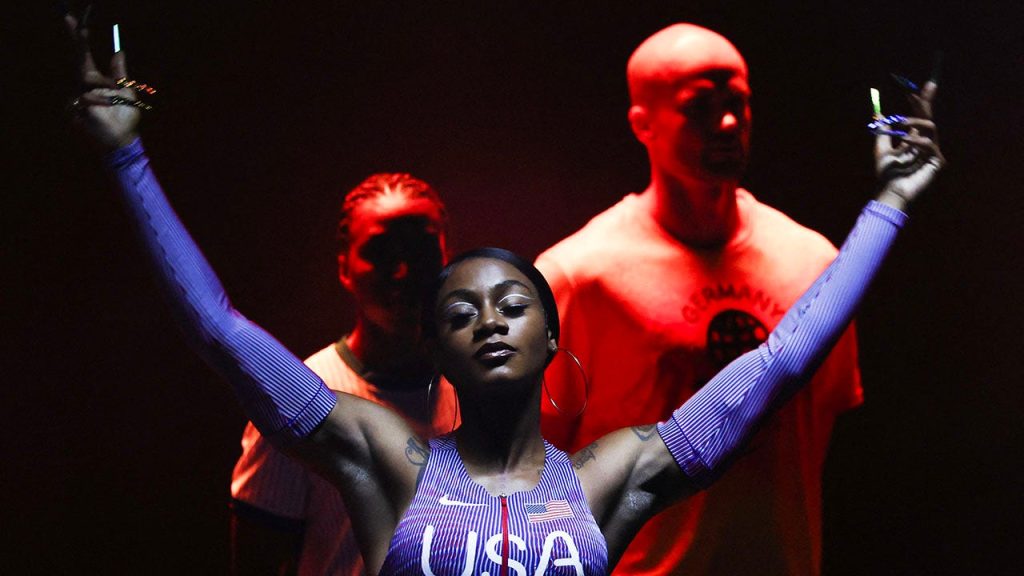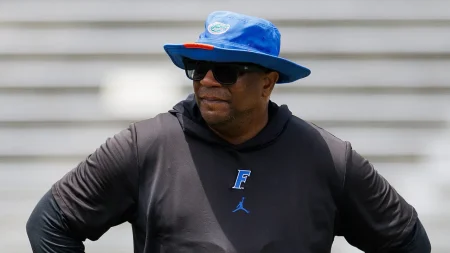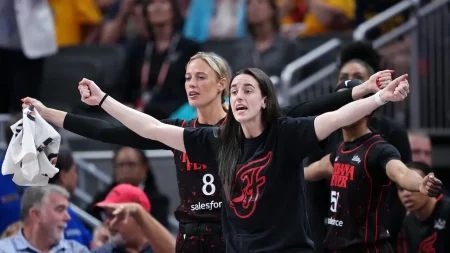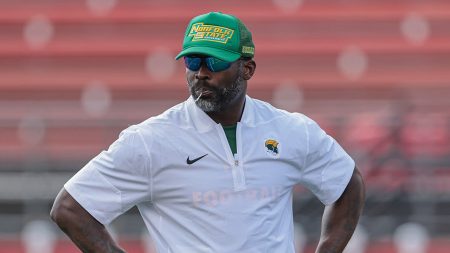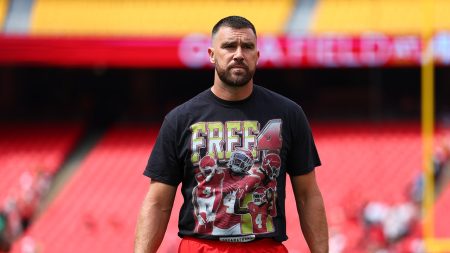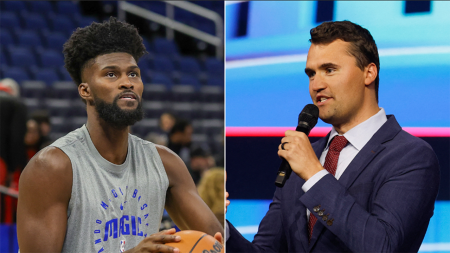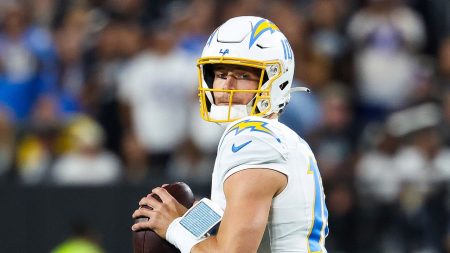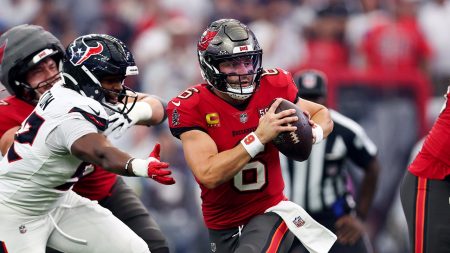American Olympic track and field athletes have expressed outrage over a red, white, and blue leotard that barely covers the bikini line, without matching shorts. The uniform was designed by Nike and worn by athletes like Sha’Carri Richardson and Athing Mu, but a different version was seen on social media that drew criticism. Nike executive John Hoke stated that athletes were consulted during the design process, and options and choices were taken into consideration by USATF. However, the controversial kit led to backlash, with many athletes feeling uncomfortable with the revealing nature of the outfit.
The post from Citius Mag quickly spread on social media, with Olympic hurdler Queen Harrison and Paralympian long jumper Jaleen Roberts among those voicing their concerns. Former track athlete Lauren Fleshman criticized the uniform as being a product of outdated patriarchal ideals, questioning the need for such revealing attire in women’s sports. Olympic gold medalist pole vaulter Katie Moon defended Nike in an Instagram post but acknowledged the need for a response to the controversy surrounding the leotard. She emphasized that athletes should have the choice to wear what makes them feel comfortable and confident, rather than catering to the male gaze.
Moon, who is set to defend her title in Paris, explained that the leotard shown on the mannequin in the viral image may have appeared more revealing than it actually is when worn by athletes. She reassured women that she did not feel concerned about wardrobe malfunctions while trying on the outfit herself. While some athletes appreciate the minimalistic design for practical reasons such as staying cool during competitions, others feel that the uniform pushes boundaries in a sport where performance and comfort should be prioritized over appearance.
The debate over the revealing nature of the Olympic track and field uniform underscores larger issues of gender representation, autonomy, and agency in sports. Female athletes should have the right to choose their attire based on performance and personal preference, rather than being dictated by societal expectations or objectified by external observers. Moving forward, it is crucial for brands like Nike and sports governing bodies to listen to athletes’ feedback and ensure that uniform designs reflect the values of inclusivity, empowerment, and respect for individual choices. By promoting a diverse range of options that cater to athletes’ needs and preferences, the sports industry can create a more welcoming and supportive environment for all participants, regardless of gender.




